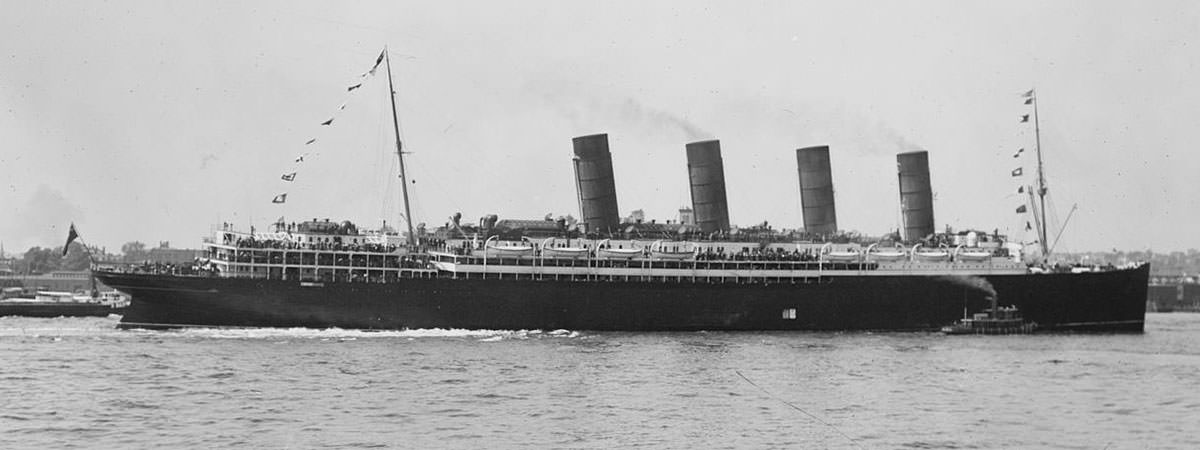RMS Lusitania was a ship which started its maiden voyage in 1907 and made 202 crossings on the Liverpool-New York Route. It created excitement on its launch being the largest passenger ship in the world at the time. It also held the Blue Riband for a while. On May 7, 1915, Lusitania was sunk by a German U-boat during the First World War. The disaster was responsible for the death of more than a 1000 people and created a furor. The sinking of Lusitania is considered a major factor in United States joining the First World War against Germany. Know more about the history and sinking of RMS Lusitania through these 10 interesting facts.
#1 IT WAS CREATED IN RESPONSE TO GERMAN SHIPS DOMINATING THE ATLANTIC TRADE
At the beginning of the twentieth century there was fierce competition between Britain’s Cunard Line and German shipping companies Norddeutscher Lloyd (NDL) and Hamburg America Line (HAPAG) for the transatlantic trade. With the German companies dominating the Atlantic with more luxurious and faster ships, Cunard approached the British government for assistance and was given a loan of £2.6 million to finance two ships on the condition that they would be designed such that they could be converted into Armed Merchant Cruisers (AMCs). This led to the creation of RMS Lusitania and her running mate RMS Mauretania.
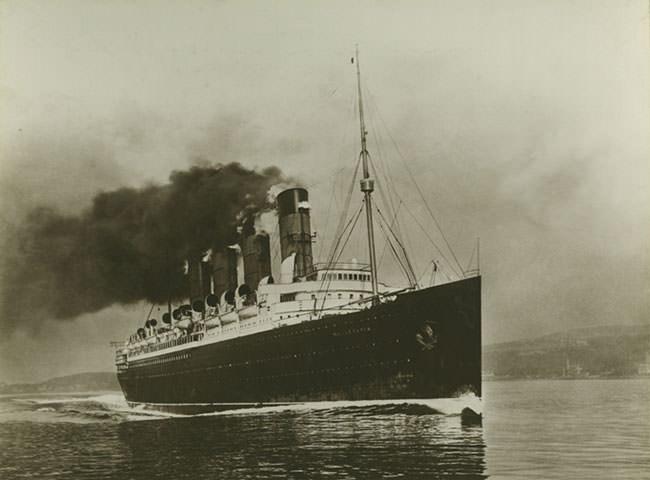
#2 RMS LUSITANIA WAS BUILT BY SCOTTISH FIRM JOHN BROWN & COMPANY
RMS Lusitania was designed by Cunard Line’s senior naval architect Leonard Peskett, who also designed RMS Mauretania. The ship’s interiors were designed by Scottish architect James Miller. It was built by Scottish shipbuilding firm John Brown & Company, which is renowned for building many other world famous ships too. The ship was named after the ancient Roman province of Lusitania, which included nearly all of modern Portugal south of the Douro River and part of modern Spain.

#3 SHE WAS THE LARGEST PASSENGER SHIP IN THE WORLD FOR A BRIEF PERIOD
Lusitania was launched on 7 June 1906. Her maiden voyage started on 7 September 1907. At the time of its introduction RMS Lusitania was the largest passenger ship in the world, a record it held till the arrival of its running mate Mauretania in November. The Blue Riband is an unofficial honor given to the passenger liner which crosses the Atlantic Ocean with record highest speed. On her second voyage in October 1907, Lusitania took the Blue Riband and became the first passenger ship to cross the Atlantic in less than 5 days. Her records were ultimately broken by RMS Mauretania.
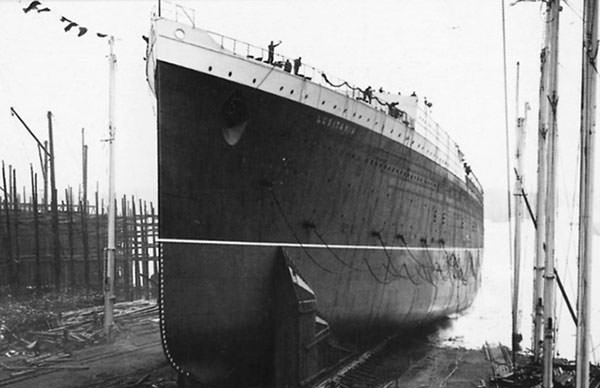
#4 SHE WAS PUT ON THE AMC LIST AFTER THE FIRST WORLD WAR BEGAN
With the advent of World War I, Lusitania was put on the official list of Armed Merchant Cruiser (AMCs) and war munitions were hid on it. However the Admiralty decided not to use her as an AMC due to the enormous amount of coal she consumed. The number of passengers declined but the economics still dictated keeping Lusitania in commercial service. She was painted in a drab grey color scheme in order to make it more difficult to detect her visually and to mask her identity.
#5 GERMAN EMBASSY ISSUED A WARNING BEFORE LUSITANIA BEGAN ITS LAST JOURNEY
The rules of naval engagement during warfare, called Cruiser Rules, required all crew and passengers of civilian ships to be safeguarded before it was confiscated or sunk. They also required the ship to not pretend to be of a different nationality, to allow searching, to not be armed with munitions or take hostile action. In February 1915, Germany declared the seas around Britain a war zone. In April 1915, the German Embassy in U.S. placed an advertisement in 50 American newspapers warning people of the danger of undertaken an Atlantic voyage as the waters around U.K. were a zone of war.
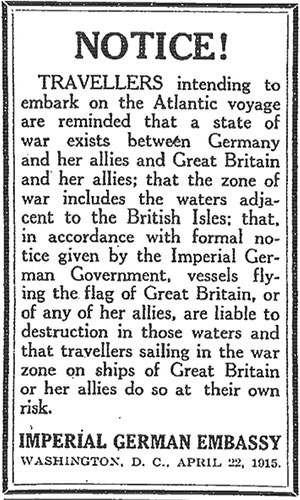
#6 THE CAPTAIN OF LUSITANIA ON ITS FINAL VOYAGE WAS WILLIAM THOMAS TURNER
Lusitania started the return leg of its 101st roundtrip voyage across the Atlantic on 1 May 1915 when it departed from New York at 12:20 p.m. Commander William Thomas Turner was the Captain of the ship. Apart from a crew of 696, the ship carried 1,266 passengers making the total number of people on board 1959. They were mostly British nationals, a good number of Canadians and 128 Americans. Interestingly, three German speaking men were found on board and locked in cells. They were probably given the task of spying on Lusitania and its cargo.
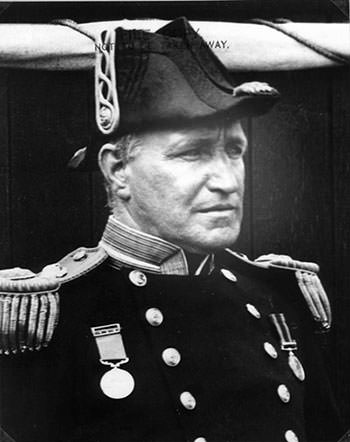
#7 RMS LUSITANIA WAS SUNK BY THE GERMAN U-20 COMMANDED BY WALTHER SCHWIEGER
SM U-20 was a Type U 19 U-boat of the German Imperial Navy. It was then commanded by Walther Schwieger. In the days prior to May 7, U-20 had sunk three British vessels and attacked several others all in the waters south of Ireland, through which Lusitania was about to sail. This led to Captain Turner being given warning messages twice on the evening of May 6. At 13:20 on May 7, 1915, Lusitania was spotted by the U-20. At 14:10, on the order of Schwieger, one torpedo was fired at RMS Lusitania striking it on the starboard bow, just beneath the wheelhouse. The torpedo blast was followed by a larger explosion, probably of the ship’s boilers. Lusitania was traveling at 18 knots and at the time no ship traveling at more than 15 knots had ever been hit by a torpedo.
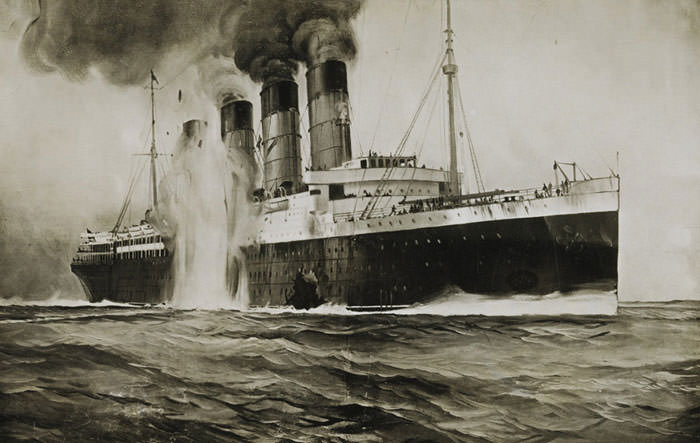
#8 RMS LUSITANIA SANK IN ONLY 18 MINUTES
Due to several factors, including Lusitania’s severe starboard list, the launching of lifeboats became difficult. It carried 48 lifeboats but only six were launched successfully. It took only 18 minutes for RMS Lusitania to sink. 1195 of the 1959 people on board perished making it a catastrophic disaster. As in the sinking of Titanic, most of the casualties were from drowning or hypothermia. Bodies of 885 victims were never recovered. One of world’s richest men, American businessman and sportsman Alfred Gwynne Vanderbilt; American theatrical producer Charles Frohman; American writer and philosopher Elbert Hubbard; and renowned Irish art collector Sir Hugh Lane; were among the people who were killed.
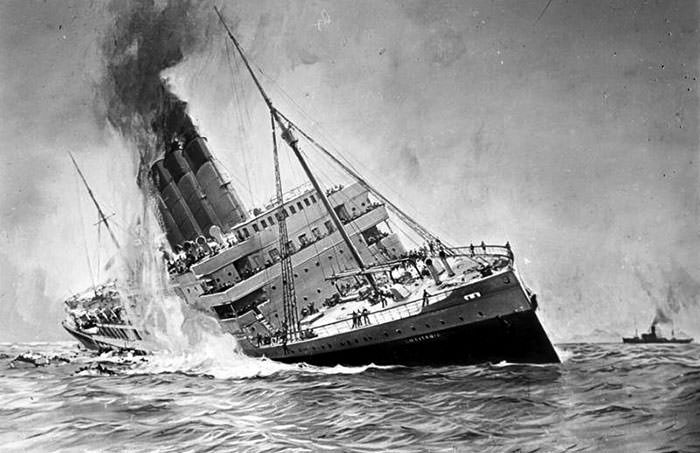
#9 THE CAPTAIN, CUNARD LINE AND ADMIRALTY WERE ALL ABSOLVED OF ANY NEGLIGENCE
Captain William Turner managed to escape the sinking Lusitania, found a floating chair in the water to which he clung and was pulled out three hours later. During the investigation that followed he was charged with negligence for not complying with Admiralty instructions of traveling at a high speed, following a zig-zag course and keeping away from the shore. Ultimately Captain Turner, the Cunard Company, and the Royal Navy were absolved of any negligence, and all blame was placed on the German government. Lord Mersey, who presided over the investigations, later resigned calling the case dirty business.
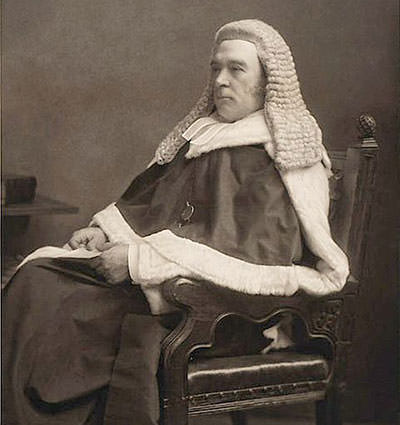
#10 SINKING OF LUSITANIA PLAYED A PART IN U.S. JOINING THE FIRST WORLD WAR
More than 100 U.S. citizens lost their lives in the disaster giving rise to an anti-German sentiment in America. Germany cited the following reasons as justifications for its action: Lusitania was carrying 173 tons of war munitions for Britain; it was in the war zone when it was hit; it was listed as an AMC; and a warning was issued by the German embassy in U.S. The sinking of Lusitania brought World War I to the forefront in the U.S. parliament and strained US-Germany relations. On April 6, 1917, months after a German U-boat sank the American ship Housatonic; the United States declared war upon the German Empire, massively affecting the course of World War I.
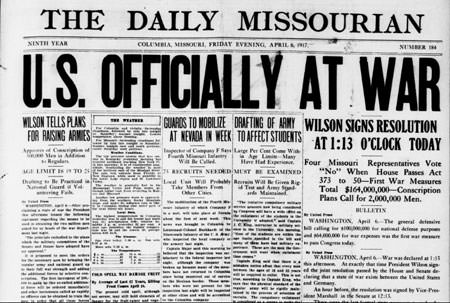
RMS LUSITANIA CONSPIRACY THEORY
There is a famous conspiracy theory regarding the sinking of Lusitania which is believed by several people including historian and former British naval intelligence officer Patrick Beesly. It says that RMS Lusitania was deliberately put in high risk by the British authorities so that it would be attacked by Germany and lead to a major incident, which would put the United States under pressure to join World War I on the side of Great Britain. Mysteries surrounding the incident include the failure of British authorities to divert Lusitania even though it knew the presence of the U-2 which had sunk several British vessels; a destroyer escort was not provided to Lusitania despite the risks; and a huge ship like Lusitania sank so quickly though it was struck by just one torpedo.

